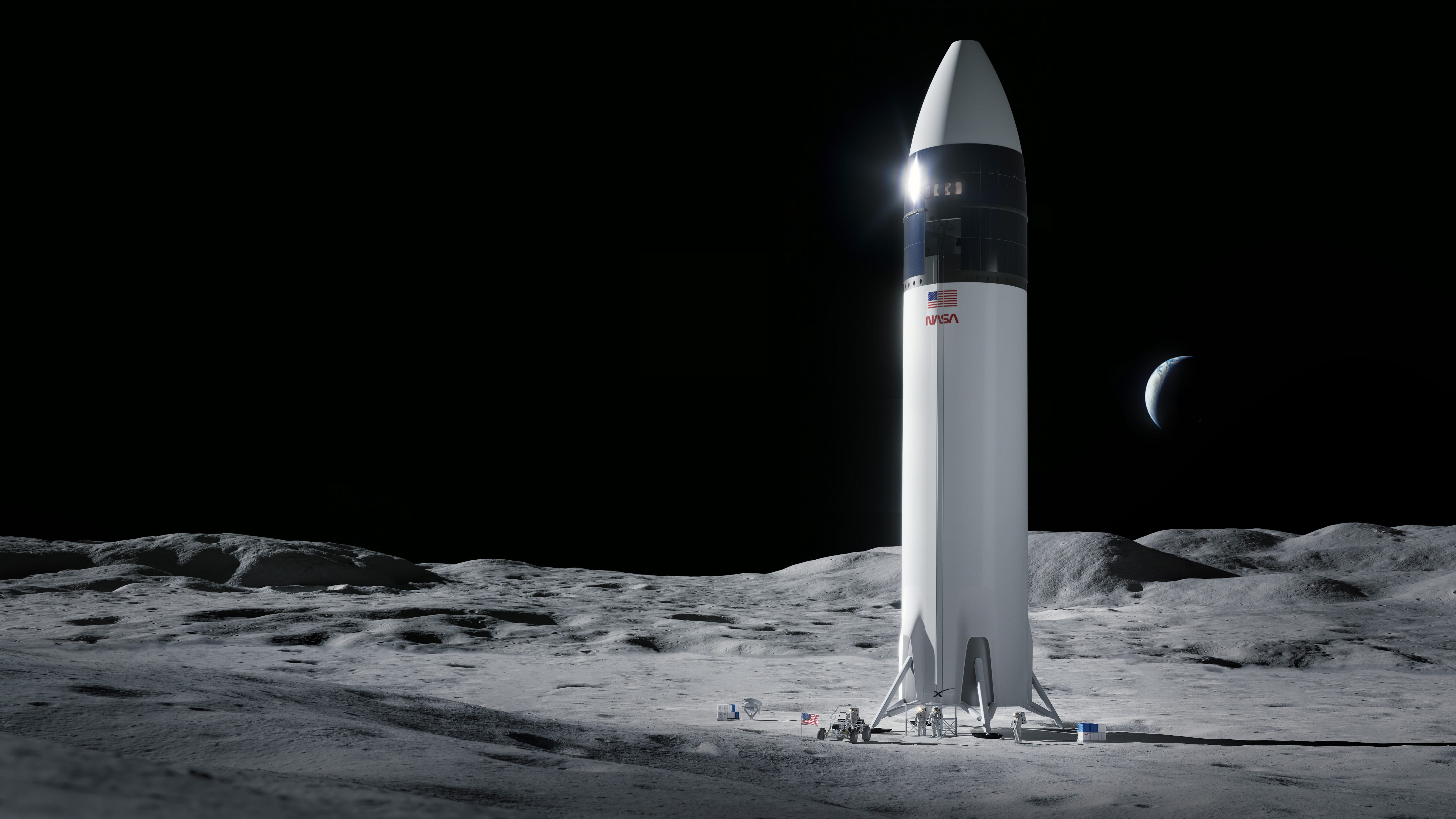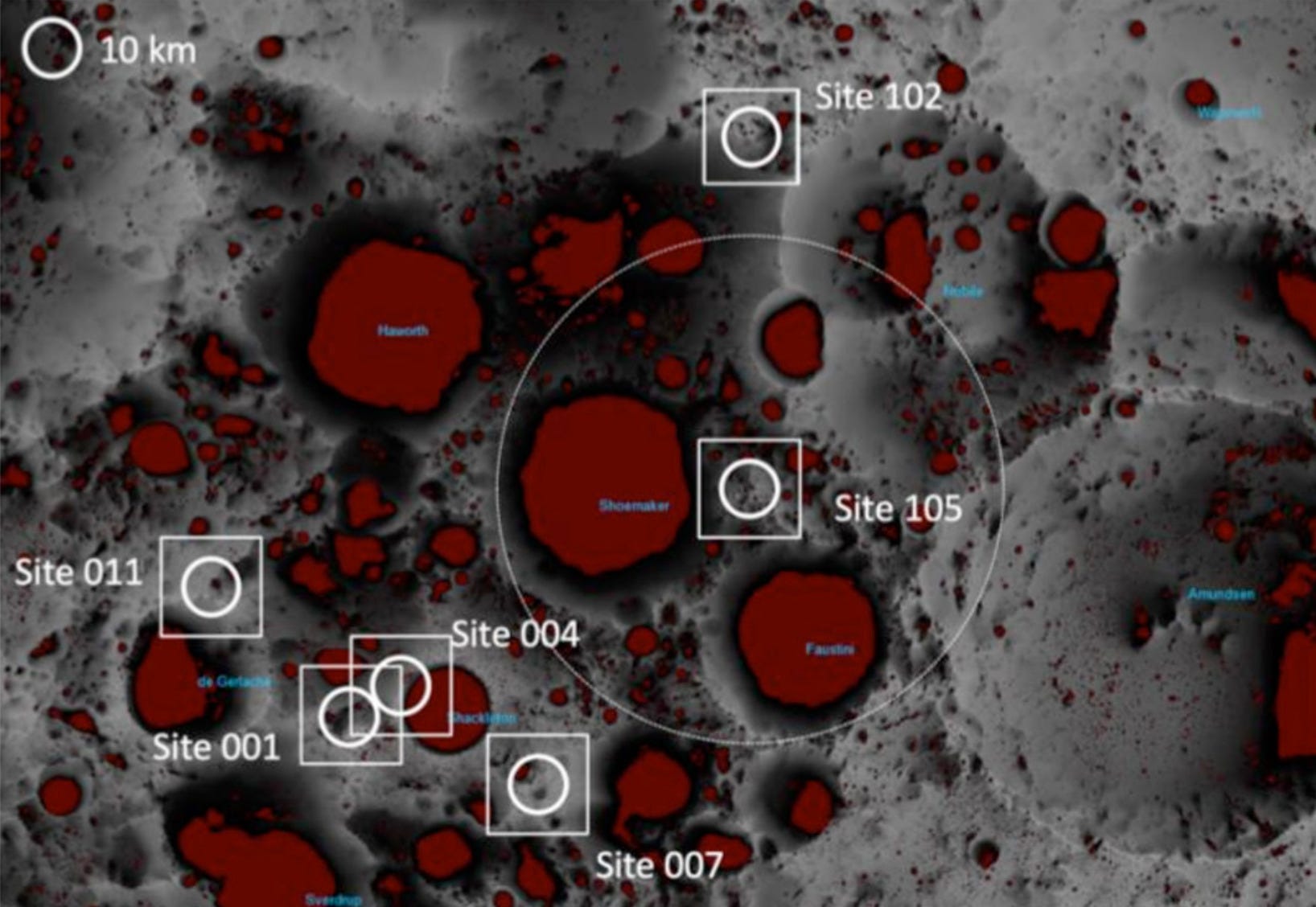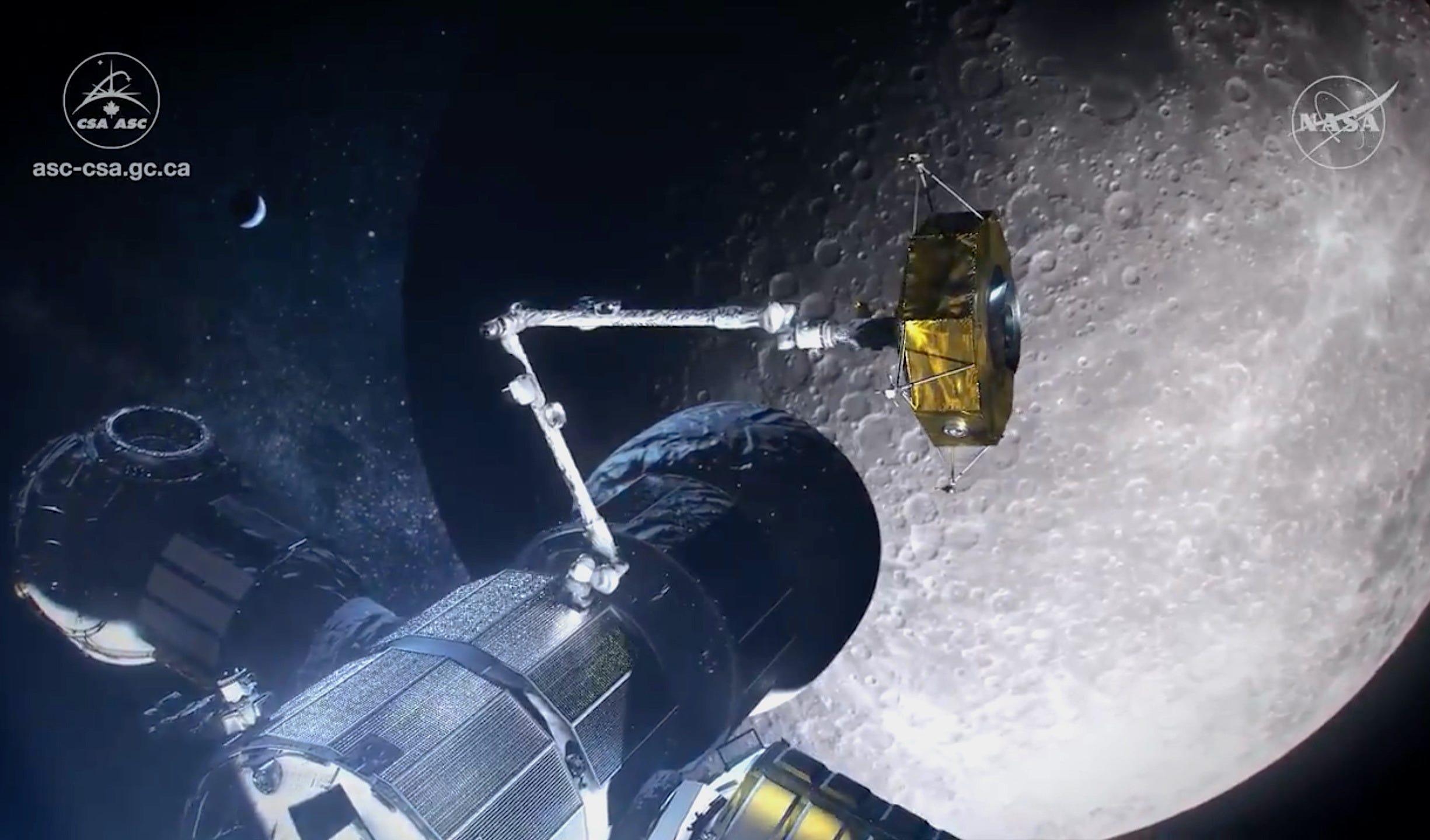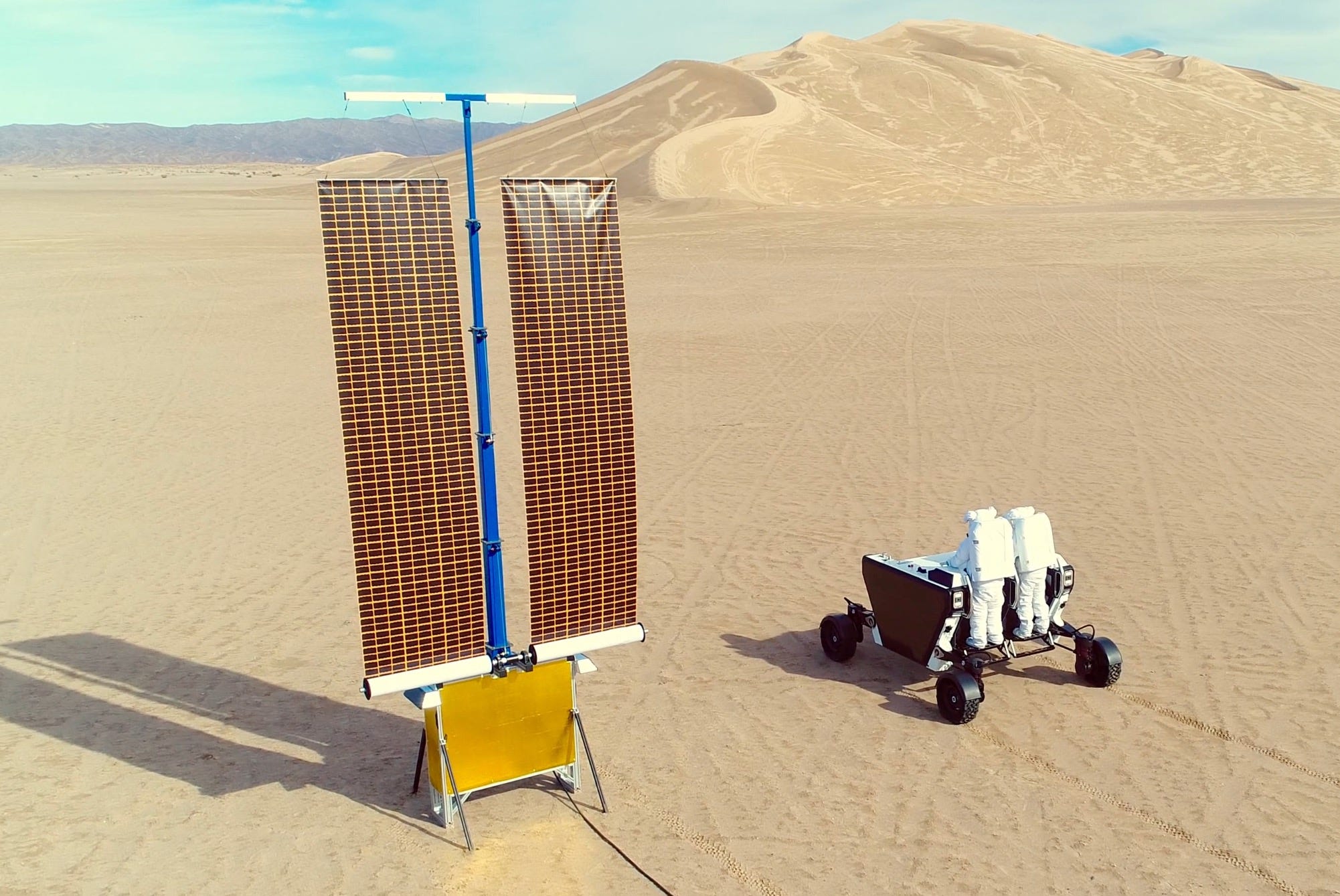Moon Monday #68: NASA Artemis Science teams, Canada's robotic arm for lunar Gateway, and more updates
NASA shared new details on science planning for its first crewed Artemis Moon landing and yet apart from a few tweets I didn’t notice anyone covering it! So this week’s Highlight section is the coverage itself instead of a summary.
Highlight & Science
At the Artemis Town Hall meeting part of the 53rd Lunar and Planetary Science conference, NASA Artemis Science Lead Sarah Noble and Exploration Lead Jacob Bleacher provided an update on science planning for Artemis III, the first crewed Artemis Moon landing mission currently targeting a 2025 touchdown with a lunar variant of SpaceX Starship.
While Artemis III’s landing site hasn’t been decided yet, it will be within six degrees of the Moon’s south pole. The mission won’t have a rover, as we already knew, and so astronauts will take short trips from the landing site to deploy and setup experiments, study local geology, and collect samples. In preparation for the mission, NASA has begun analog field training on Earth for Artemis astronaut candidates, who completed several test campaigns last year.

Every crewed Artemis mission’s Science group will be organized as follows.
An Artemis Geology Team, a roughly 10 member team per mission, which will specify science objectives for each mission, plan and coordinate crew activities and traverses, provide sampling strategies, and be involved in pre- and post-mission activities such as astronaut training and preliminary studies of returned samples.
There will be additional participating scientists chosen per mission, wherein international scientists are welcome. NASA is currently collaborating with ESA, JAXA and CSA for the same. Artemis III will have roughly 10 participating scientists.
An internal Artemis Science Team, which comprise several NASA scientists common across all Artemis science missions. They are tasked with ensuring that high-level lunar science goals of the U.S. scientific community are kept in mind during every stage of Artemis planning at the agency. They will also interface between the Artemis Geology Team and the rest of NASA.
Artemis Instruments Teams, which will propose long-lived autonomous surface payloads to chiefly study local geophysical and environmental conditions at the Moon’s south pole. For Artemis III, instruments must specifically address identified science priorities by the mission’s Science Definition Team. The same report has also expressed the need for having cryogenic sampling capabilities to bring precious volatiles from the Moon’s permanently shadowed regions to Earth for meticulous studies.
The Geology Team, participating scientists, and Instruments Teams for Artemis III will all be competitively selected by NASA. The solicitations for these proposals will be published later this year on the agency’s ROSES-2022 Blog.
Here are the talk slides of the Artemis Town Hall meeting.

NASA Artemis III LPSC 2022 Presentation6.55MB ∙ PDF fileDownloadDownload
Related:
- Artemis recommendations by the Lunar Exploration Analysis Group (LEAG), which supports NASA by providing scientific, technical, commercial, and operational analysis of the agency’s lunar exploration objectives.
- ESA’s Caves & Pangaea campaign
- NASA’s VIPER rover mission, scientific precursor to Artemis III

Exploration
Bahrain signed the NASA-led Artemis Accords for cooperation in lunar and space exploration. It’s the 17th nation to sign the Accords, and the third such country from the Middle East after the UAE and Israel. This decision follows the recent successful launch of the joint Bahrain-UAE Light-1 Earth satellite from the International Space Station in cooperation with JAXA (Japan is an Accords signee too).
The Canadian Space Agency (CSA) has awarded a USD $210 million contract to MDA to begin preliminary design of Canadarm3, Canada's contribution to the NASA-led Gateway lunar station. The contract also includes funding to procure some of Canadarm3's components. The highly autonomous Canadarm3 robotics system, including its small dextrous arm, will inspect, maintain and repair the Gateway station, help assemble new station modules, capture visiting spacecraft, aid astronauts during spacewalks, install and support scientific instruments, and more.

NASA and CSA are targeting delivering Canadarm3 to the Gateway in 2027 but it’s to be noted from a previous CSA contract to MDA that external robotic interfaces of the Canadarm3 system will be delivered before, on the planned 2024 launch of a SpaceX Falcon Heavy rocket carrying Gateway’s two principal modules—the Habitation and Logistics Outpost (HALO) and the Power and Propulsion Element (PPE).
NASA’s Artemis Lunar Terrain Vehicle (LTV), launching no earlier than 2027, will be far more capable than the Apollo LRV, allowing astronauts to explore 20 kilometers across the Moon’s rugged south polar terrain, including permanently shadowed regions. Unlike Apollo, the LTV will be used across multiple missions for at least 10 years. While we wait for NASA to solicit LTV proposals in the coming months, Lockheed Martin and Northrop Grumman had already revealed their concepts last year. Now Astrolab has announced its intentions to bid their Flexible Logistics and Exploration (FLEX) rover as NASA’s LTV. Unlike Lockheed and Northrop’s concepts, as far as we know, FLEX already has a full-scale, fully-functional terrestrial prototype. It has been tested for mobility, crewed and remote operations, and to deploy a variety of large payloads. Astrolab has posted a neat video on FLEX’s cargo use cases.

More Moon
Why is our Moon's farside so different from its nearside? What can exploring this dichotomy tell us about the origin of the Moon, Earth and other planets? How will planned future missions to the Moon advance this front? My latest article for The Planetary Society takes a look at all these questions and more.
Thank you Andrew Cantino, Mat Kaplan and Andrea Battisti for supporting me and powering this edition of Moon Monday!
Everyone, I’m publishing this one-of-a-kind Moon exploration newsletter for free, with no ads. And it will stay that way. If you like my work, support me to keep it going.
